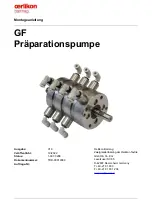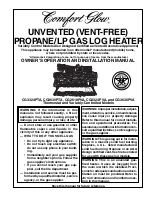
3
1.2
Energy saving
Hot utility water reservoir is insulated by means of a top-quality polyurethane foam with zero CFCs content. Adjust
the temperature of the heater's thermostat to that level only that you need to run your home. Thus you will reduce
electricity consumption, as well as the amount of lime sediments on the walls of the receptacle and on the electric
element's pit.
1.3
Emergency power consumption
If no heated water is taken from the tank, a small amount of heat leaks. This loss is measured for a period of 24 hours
at the temperature of 65°C in the heater, and at 20°C in its ambient area. The resulting value is expressed in kWh/24h
and indicates the amount of power needed to maintain the temperature set.
Data sheet pursuant to Directive No 442/2004 and Appendix No 7 (TAB. 1)
2.
Servicing
2.1
The service devices of the heater are located under the plastic guard of the control panel.
Thermostat knob
Electric circuit closing indicator lamp
Tipping plastic guard
2.2
Temperature setting
Water temperature is set by turning the thermostat knob. The desired symbol is adjusted against the fixed point on the
control panel.
Notice:
Adjusting the thermostat selector at the left backstop does not mean permanent shutoff of the heating element.
When the heater is in use without blocking the daily rate, we do not recommend the temperature to be set above 65°C.
The maximum value to select is “
60“
.
2.3
Limiting the regulation range; locked settings.
For various safety reasons (unintentional scalding, preventing children or unauthorised person from handling), the
regulation range can be
limited
, or the setting on the thermostat
blocked
.
Lower temperature range
limit (about 5°C)
Fixed point on the control
panel
“Anti-freezing” temperature
(about 8°C)
Upper temperature range
limit (about 74°C)
”Ideal” temperature
(about 60°C)
B
6,88
80
2,5
4,8
0,55
B
7
100
3
6
0,7
B
6,96
125
3,8
8
0,87
B
6,77
155
5
9,5
1,05
OKHE 80
OKHE 100
OKHE 125
OKHE 160
Electricity
consumption for
heating of the
contents from
15°C to 65°C in
kWh
Heater types
Energy
efficiency
class
Heat
losses
Wh/24hr/l
Nominal
capacity (l)
Time of
content
heating
(hours)
Heat
losses
kWh/24hr



























